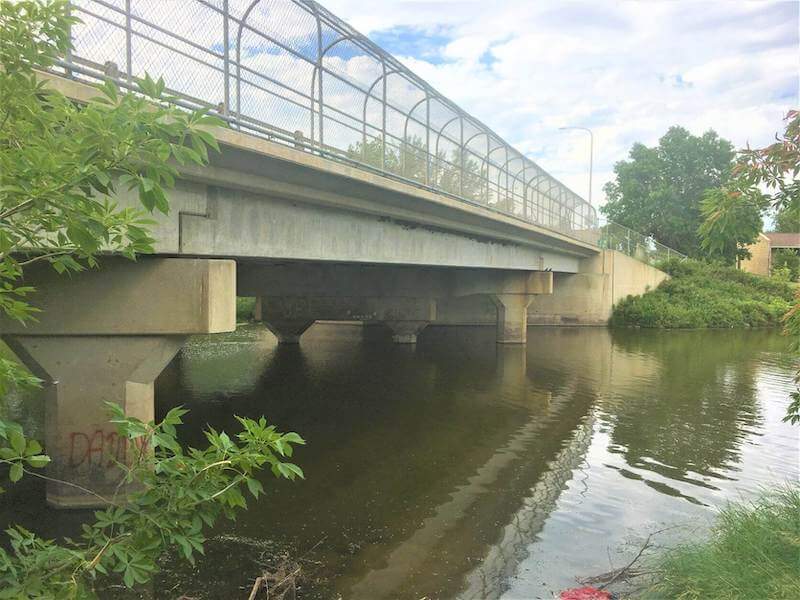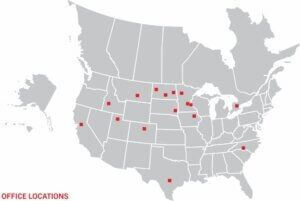Maintaining the Health and Longevity of Bridges

November 7, 2023
In the United States, a complex network of more than 617,000 bridges crisscrosses the country, serving as vital arteries that connect communities, facilitate commerce and support economies. Today, 42 percent of bridges nationwide are more than 50 years old, and approximately 7.5 percent of them are in poor condition, structurally deficient, according to the American Society of Civil Engineers.
While the choice of construction materials unquestionably plays a crucial role in the durability of a bridge, its lifespan is also heavily dependent on good bridge maintenance. Regular maintenance plays a pivotal role in extending the longevity of bridges everywhere, irrespective of their location or construction materials.
Concrete, Steel and Timber: The Building Blocks
The three primary construction materials for bridges today are concrete, steel and timber. While timber bridges are more common in rural areas, concrete and steel bridges are preferred in urban settings. Over time, many old timber bridges have been replaced with concrete or steel due to their durability.
Concrete, being the most prevalent material for bridges in the United States, offers advantages like low cost, widespread availability and ease of construction. However, concrete faces challenges such as cracking, spalling, scaling and corrosion, primarily caused by chlorides in de-icing salts and freeze-thaw cycles. All of these factors contribute to deterioration of a bridge and its lifespan making proper maintenance essential.
Steel bridges, on the other hand, require careful consideration of corrosion, fatigue and proper steel connection detailing. Regular painting may be necessary to extend their longevity. Timber, while lightweight and suitable for specific locations, can’t match the durability of concrete or steel unless adequately pressure-treated with preservatives.
Other factors of bridge longevity include location, environment, frequency of routine maintenance and number and weight of vehicles crossing a bridge daily.
The Importance of Bridge Maintenance in Preserving Bridge Longevity
Bridges, like any infrastructure, undergo wear and tear over time. Regular, good maintenance practices are critical for prolonging their lifespan and ensuring their continued safety and functionality. Maintenance practices as simple as routine sweeping and washing of structures are very important, since debris traps moisture and chlorides from deicing salts which can degrade concrete and steel structures faster. The importance of proactive maintenance, therefore, cannot be overstated.
Maintenance and repair of bridge joints are particularly vital to prevent water intrusion, a common cause of bridge damage. Replacing seals is more cost-effective in the long run than repairing steel structures, but it may require careful planning due to potential road closures during construction. One of the most important maintenance efforts for substructure deterioration also starts with ensuring the seals at joints are in-tack and moisture and chloride are not traveling to deteriorate the structure bearing and foundation elements.
Maintenance isn’t just about resolving existing problems — it’s also about predicting and preventing future ones. Regular inspections and minor repairs can prevent small issues from escalating into significant problems that could compromise the bridge’s integrity and incur substantial repair costs.
Bridge Longevity and Infrastructure Funding
What is the average lifespan of a bridge? The American Association of State Highway and Transportation Officials’ (AASHTO) LRFD Bridge Design Specifications outline a 75-year bridge design service life as the standard expectation.
However, just like people, bridges are living longer lives, and some organizations are striving for even greater longevity. The Colorado Bridge Enterprise released a document in 2020 titled “Strategies for Enhancing Bridge Service Life,” with the ultimate goal of achieving a century-old service life for bridges. These strategies aim to limit bridge component deterioration and enhance the potential of structures to perform beyond the standard 75 years. Jointless bridges, for one, are recommended as one method to increase bridge longevity, according to the Colorado Department of Transportation.
Now, with the influx of infrastructure funding currently available, it’s an opportune time to invest in rehabilitating bridges and, in tandem, implementing proactive maintenance practices. These investments can significantly extend the lifespan of these critical structures, ensuring bridges stay functional and safe for years to come.
A Proactive Bridge Maintenance Approach
With decades of experience and a portfolio of thousands of bridge projects, Ulteig is uniquely positioned to provide well-informed recommendations on maintenance practices optimized for longevity. This expertise is essential to strengthening the Transportation Lifeline Sector®.
Ulteig’s commitment to sustainable solutions is evident in recent projects like the NDDOT Williston Truck Relieve Route. Our project team conducted a comprehensive evaluation of concrete and steel options, preparing detailed reports examining the advantages and disadvantages of each material, considering the specific project conditions and requirements.
In the Heart River Bridge Rehabilitation project, Ulteig’s team innovatively repaired a deteriorating bridge pier using FRP wraps, bypassing the need for costly coffer dams. This solution saved both time and money while delivering a long-lasting repair.
New technologies like FRPs are always emerging, not only preserving a structure’s integrity, but also accelerating construction timelines, reducing environmental impact and lowering costs, in addition to ease of maintenance.
Looking Ahead: The Future of Bridge Maintenance
The future of bridge maintenance involves significant advancements in monitoring technologies and data analysis tools. Real-time data on the health of bridges can inform proactive maintenance strategies, helping to extend their lifespan.
Bridges are not just structures; they are a testament to human ingenuity and a crucial part of our nation’s infrastructure. Their upkeep requires a careful balance between the need for maintenance and the potential disruption it may cause. At Ulteig, we’re committed to finding and implementing the right blend of solutions — from materials to maintenance — to ensure the durability and safety of all bridges across the country.
For more information about Ulteig’s transportation structures group or our work in bridge maintenance, please don’t hesitate to reach out. We’re here to help ensure the longevity and safety of our nation’s bridges through effective and efficient maintenance practices.
WHAT MAKES ULTEIG DIFFERENT?
From global energy producers to locally funded cities and private developers to government agencies, the clients we serve encompass a broad range of relationships and projects. Find out why Ulteig is a leader in the engineering industry.
Contact Us



